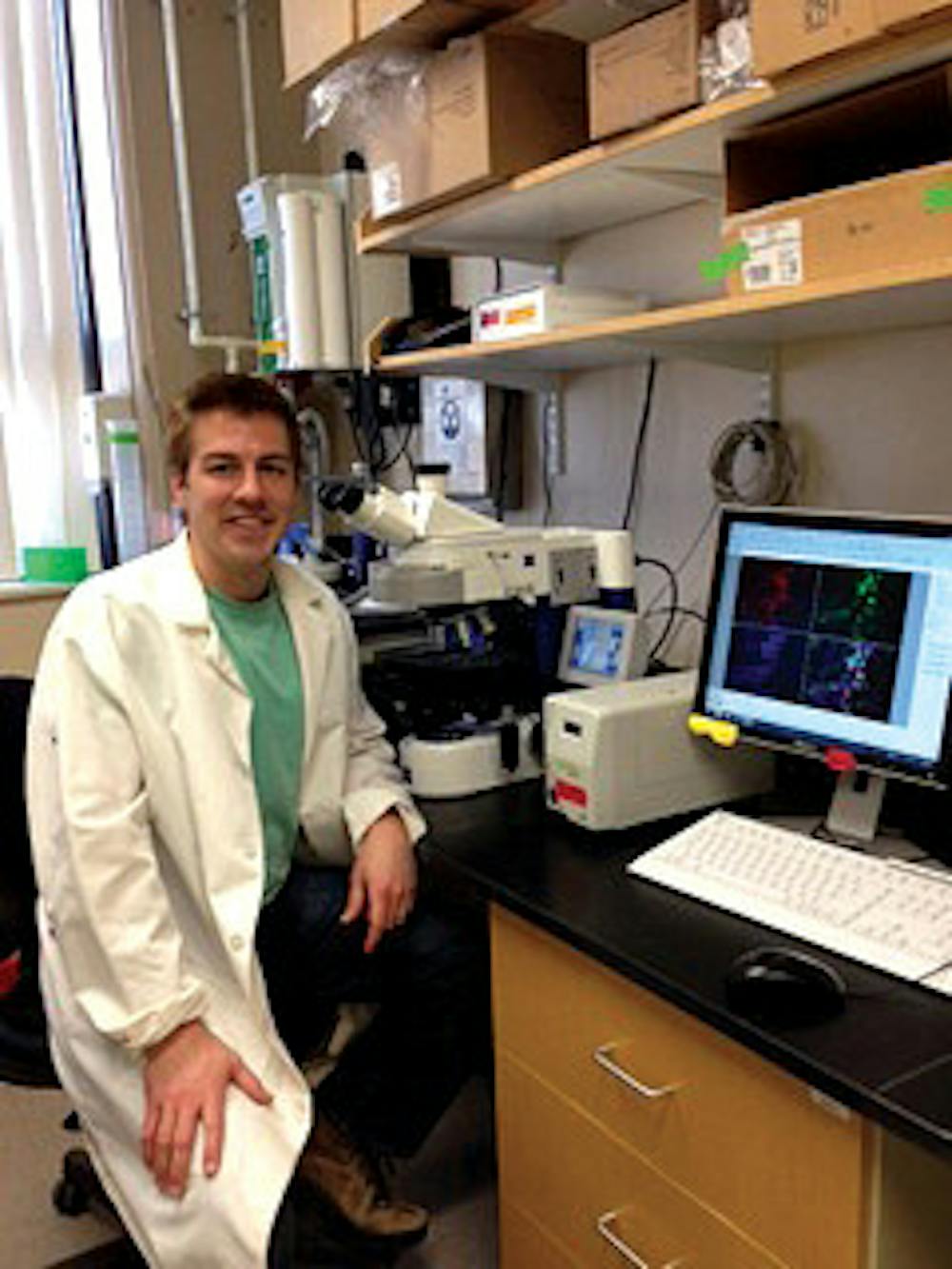University biologists recently discovered a specific gene in human males that may be essential to sperm production later in life.
In a study published in the February issue of the journal Stem Cells, researchers revealed that the loss of the protein TAF4b in male mice results in premature infertility. Mutations in the gene responsible for the production of the protein leave mice unable to sustain spermatogenesis after only a few months of sexual maturity, said Richard Freiman, associate professor of medical science and lead author of the paper.
After discovering that TAF4b was expressed highly in the ovaries and the testes, the research team became interested in the protein’s role in reproduction, Freiman said. The researchers manipulated the mouse genome through a process known as homologous recombination.
“You can knock specific genes out of the mouse genome and then examine the mice that are born and see what function the gene serves in normal development,” Freiman said.
The researchers noticed that male mice whose TAF4b gene was manipulated were only fertile for a month or two, whereas mice with intact TAF4b remained fertile for several years.
“Cells that are involved in initial fertility are different than cells involved in subsequent rounds of sperm production. The first set undergoes meiosis and become sperm by a direct route, but the other set develops into precursor cells that become stem cells,” Freiman said.
“What we hypothesized about our mice is that they’re able to go through this initial round of spermatogenesis, but they can’t make the stem cell population, so they can’t set themselves up for long-term fertility,” he added.
These results may be applicable to human fertility since humans have a TAF4b gene that is very similar to that of the mouse, said Eric Gustafson PhD’09, a postdoctoral research fellow and first author of the paper.
A different study published last year examined a population of four infertile brothers in eastern Turkey who each had a homozygous mutation in their TAF4b gene similar to the one created in the mice. These men had very low or no sperm counts, Gustafson said. “So we think these genes have many similar, if not identical functions in humans. What we learn about in the mouse gene may be used to address or diagnose reproductive defects in humans as well,” he added.
With couples having children later and later in life, this study has important implications for family planning, Freiman said.
“If we could learn how this process is regulated normally, clinicians might be able to devise better strategies to either monitor or even intervene with cases of infertility,” he added. For instance, if scientists could detect the mutation in teenage boys early on, doctors could freeze their patients’ sperm for later in life, according to a University press release.
The study also has important outcomes in terms of stem cell research, said Professor of Biology Gary Wessel, who was not involved in the study.
“This research shows us that this particular transcription factor, TAF4b, is involved in the transcription process involved in maintaining the stem cell itself,” Wessel said. “As a consequence, it now gives the investigators a more careful view of what stem cell decisions are like,” he added.
The study’s results are relevant to all stem cell research, Wessel said. “Everything in biology is connected. If you make any kind of breakthrough, it’s going to have ripple effects throughout the entire discipline.”
The researchers are currently working to identify the precise molecular mechanisms that TAF4b is responsible for, Freiman said. “We now know that TAF4b performs this function, but we don’t know how it does it,” he added. “Once we figure that out, it might reveal new areas of intervention for fertility preservation.”





